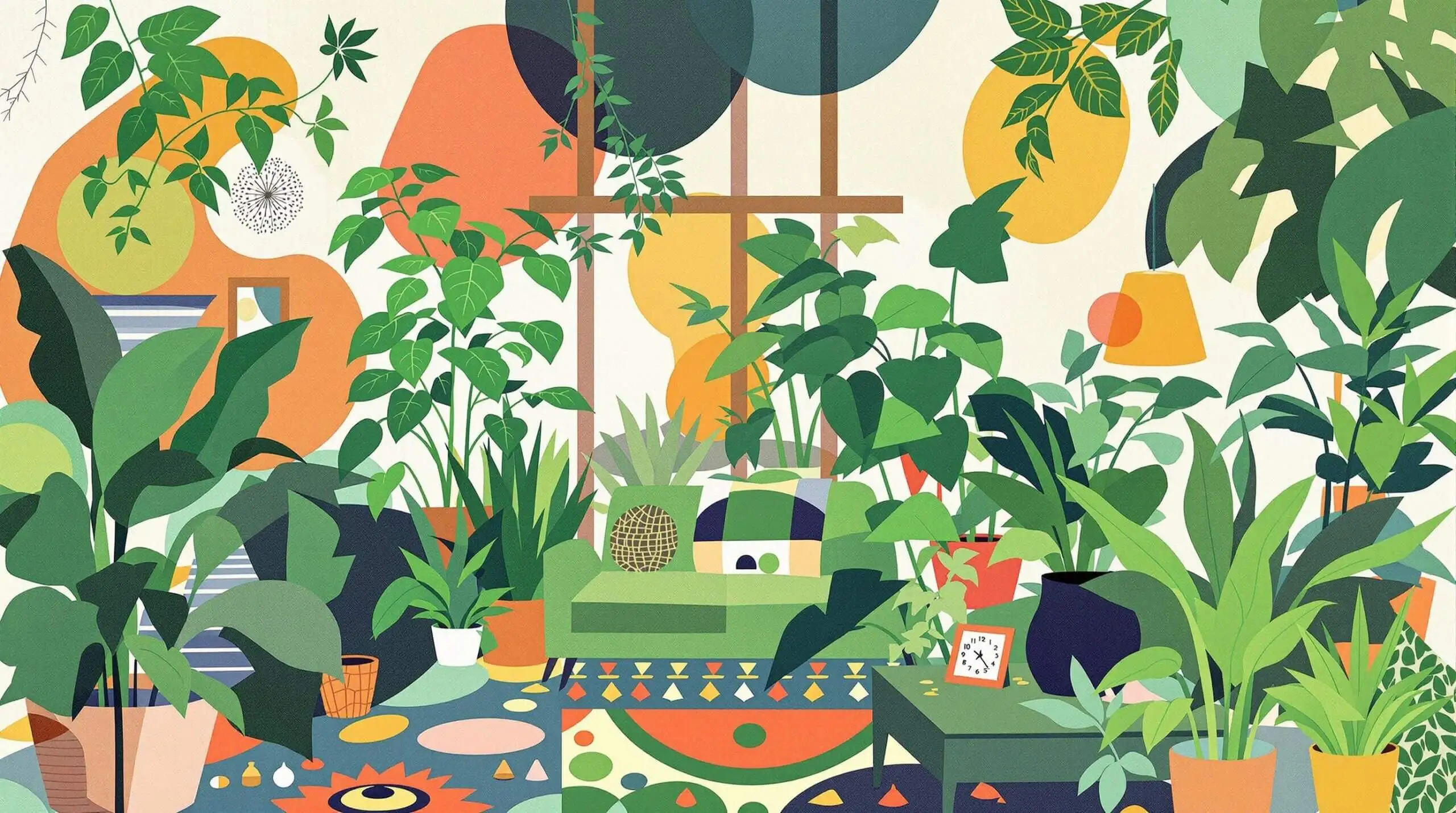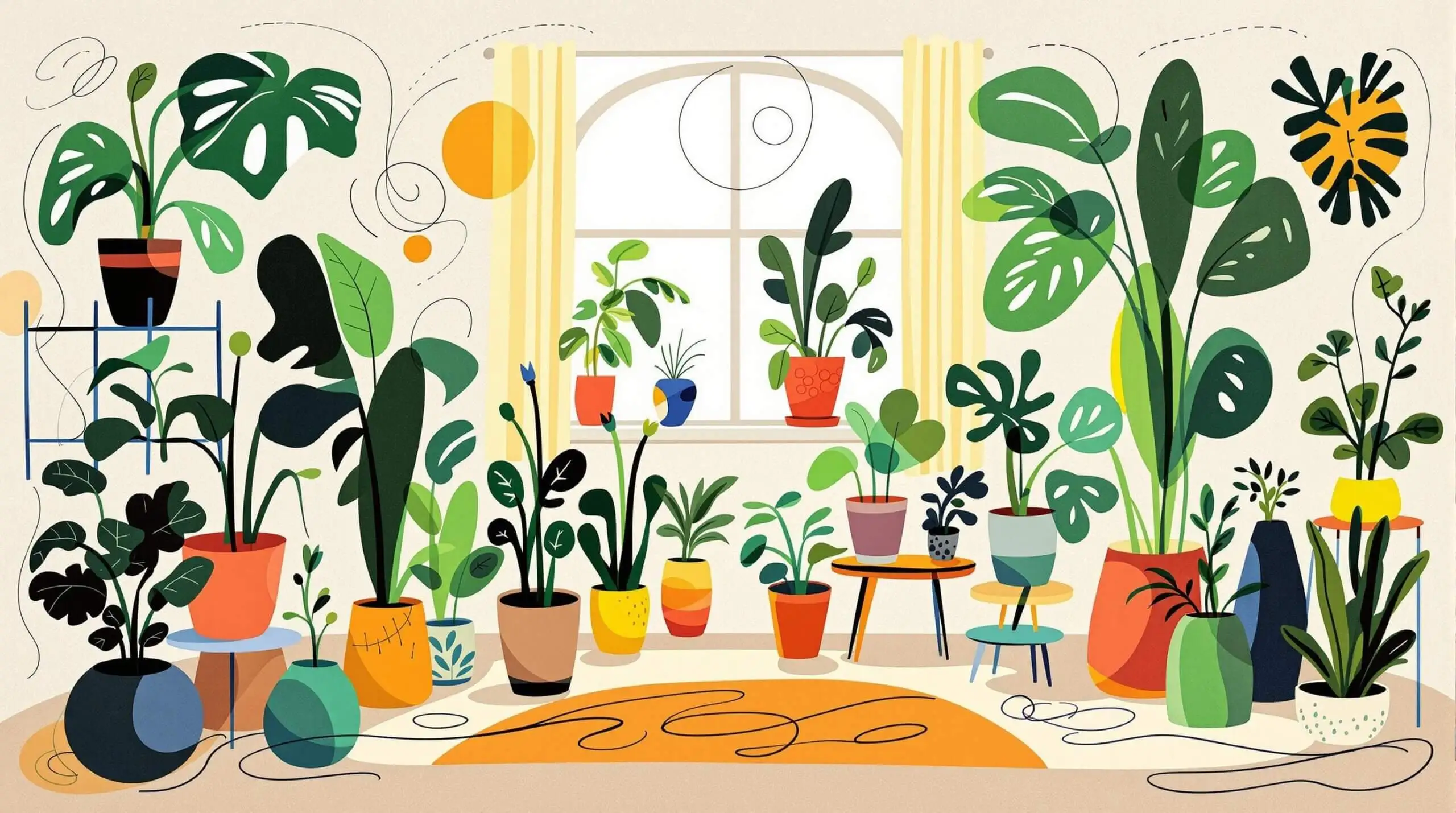Shinrin-Yoku at Home: Indoor Plants for Aging Well
Explore how indoor plants can enhance your home environment and support healthy aging through the practice of Shinrin-Yoku.

Understanding Shinrin-Yoku and Indoor Plants: The Basics
What is Shinrin-Yoku and Why Does it Matter for Aging?
Shinrin-yoku, the Japanese practice of forest bathing, has captured scientific attention for its remarkable health benefits. But here’s something fascinating – you don’t need a forest to reap its rewards. Indoor plants can create a mini-forest environment right in your living room, offering similar advantages for healthy aging.
The Science Behind Plants and Human Health
Plants affect our bodies in measurable ways. Research shows they reduce stress hormones like cortisol by up to 15%, lower blood pressure, and improve air quality. These benefits become increasingly important as we age. Studies from NASA and various universities demonstrate that indoor plants remove harmful volatile organic compounds (VOCs) from the air, creating healthier breathing environments for older adults.
Origins and Evolution of Plant Therapy
While Shinrin-yoku was formally recognized in Japan in 1982, humans have instinctively understood the healing power of plants for millennia. Ancient healing traditions across cultures incorporated plants for their therapeutic properties. Modern research validates these practices, showing that even brief exposure to plants can reduce anxiety and improve cognitive function – crucial factors in healthy aging.
Challenges and Common Misconceptions
Many people believe maintaining indoor plants is difficult or time-consuming. Actually, numerous hardy species thrive with minimal care. Another myth is that plants in bedrooms reduce oxygen at night – in reality, the effect is negligible, and the benefits far outweigh any concerns. The key is selecting appropriate plants and understanding their basic needs.
Statistics and Research Data
The numbers are compelling. Studies show that people with indoor plants experience 25% fewer symptoms of poor health. Research participants working or living with indoor plants show 15% higher scores on creativity tests and report 30% less fatigue. For older adults, regular interaction with plants correlates with a 20% reduction in stress-related symptoms.

Creating Your Indoor Forest: Plant Selection and Care
Best Plants for Indoor Shinrin-Yoku
Some plants excel at air purification and require minimal maintenance. Snake plants (Sansevieria) remove toxins and release oxygen at night. Peace lilies filter air pollutants and thrive in low light. Spider plants multiply easily and remove formaldehyde from the air. These plants create a perfect starting point for your indoor forest.
Strategic Plant Placement for Maximum Benefits
Plant placement affects both their health and your benefits. Living areas benefit from larger, leafy plants that increase humidity and filter air. Bedrooms do well with peace lilies or snake plants. Bathrooms thrive with moisture-loving varieties like ferns. The key is creating plant clusters that mimic natural forest settings while maintaining practical living spaces.
The Health Impact of Indoor Plants on Aging
Physical Health Benefits
Indoor plants improve air quality by removing pollutants and increasing humidity – particularly beneficial for respiratory health in older adults. They reduce airborne microbes by up to 50% and increase indoor humidity by 10-15%, helping prevent dry skin and respiratory issues common in aging.
Mental and Emotional Well-being
Plants support cognitive health and emotional stability. Research shows that caring for plants reduces depression symptoms by 30% in older adults. The simple act of tending to plants provides purpose and gentle physical activity, while their presence reduces anxiety and improves mood.
Social and Active Aging Benefits
Plant care creates opportunities for social connection through gardening clubs or plant-sharing communities. It provides a gentle form of physical activity and maintains fine motor skills. The responsibility of caring for plants helps maintain daily routines and cognitive engagement, essential factors in healthy aging.
Essential Plants for Different Living Spaces
- Living Room: Boston Fern, Rubber Plant, Fiddle Leaf Fig
- Bedroom: Snake Plant, Lavender, Spider Plant
- Bathroom: Peace Lily, Bamboo Palm, Chinese Evergreen
- Kitchen: Herbs (Basil, Mint, Rosemary)
- Home Office: ZZ Plant, Pothos, Janet Craig Dracaena
- Low-Light Areas: Cast Iron Plant, Chinese Evergreen, Philodendron
- Small Spaces: Air Plants, Succulents, Mini Cacti
Plant Care Tips for Older Adults
- Choose lightweight pots with good drainage
- Use self-watering systems or moisture meters
- Place plants at comfortable heights to avoid bending
- Select low-maintenance varieties
- Group plants with similar water needs
- Use quality potting soil to reduce maintenance
- Install proper lighting where needed
- Consider raised planters for easier access
Creating a Year-Round Indoor Forest Experience
Seasonal Plant Care
Different seasons require adjustments in plant care. Winter needs less watering but more humidity. Summer might require more frequent watering and protection from direct sun. Understanding these seasonal rhythms helps maintain healthy plants year-round while connecting us to natural cycles.
Air Quality Enhancement
Indoor plants actively improve air quality through several mechanisms. They absorb carbon dioxide and release oxygen, remove airborne particles, and increase humidity. NASA research identifies specific plants that excel at removing common indoor pollutants, making them valuable allies in creating healthy indoor environments.
Creating Plant-Based Relaxation Spaces
Dedicated plant corners or green spaces within your home provide perfect spots for meditation, reading, or gentle exercise. These areas can include comfortable seating, good lighting, and clusters of plants to maximize the forest bathing effect. Even small spaces can become peaceful retreats with thoughtful plant arrangement.
Advanced Tips for Indoor Forest Creation
- Use vertical gardening techniques to maximize space
- Create different height levels to mimic forest canopy
- Include varied leaf textures and shapes
- Add natural materials like wood and stone
- Incorporate gentle water features
- Use natural light strategically
- Group plants by care requirements
- Rotate plants seasonally for optimal growth
Future Trends in Indoor Plant Therapy
Technological Integration
Smart plant care systems are making indoor gardening more accessible. Automated watering systems, plant monitoring apps, and grow lights with timer functions help maintain healthy plants with minimal effort. These technologies particularly benefit older adults by simplifying plant care routines.
Research and Development
Ongoing research continues to reveal new benefits of indoor plants. Studies focus on their impact on cognitive health, stress reduction, and air quality improvement. Scientists are identifying specific plant varieties that offer maximum health benefits with minimum care requirements.
Indoor plants offer a practical way to bring the benefits of forest bathing into daily life. Their impact on physical health, mental well-being, and environmental quality makes them valuable tools for healthy aging. By creating your own indoor forest, you can enjoy these benefits year-round, regardless of mobility or access to outdoor spaces. The key lies in selecting appropriate plants, establishing simple care routines, and creating spaces that promote both plant health and human well-being.